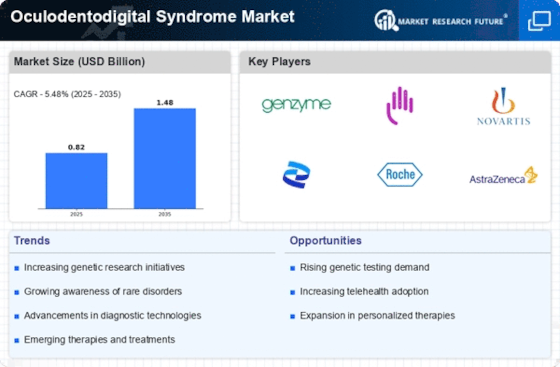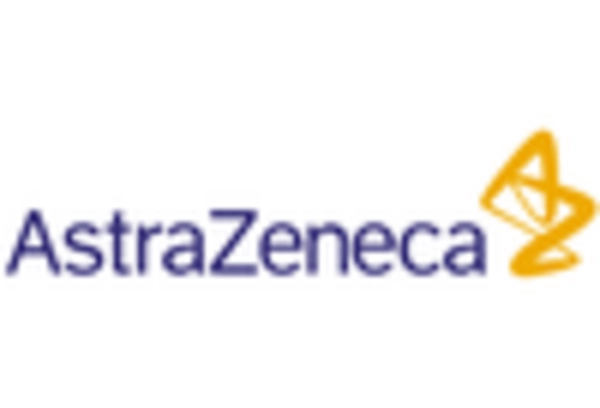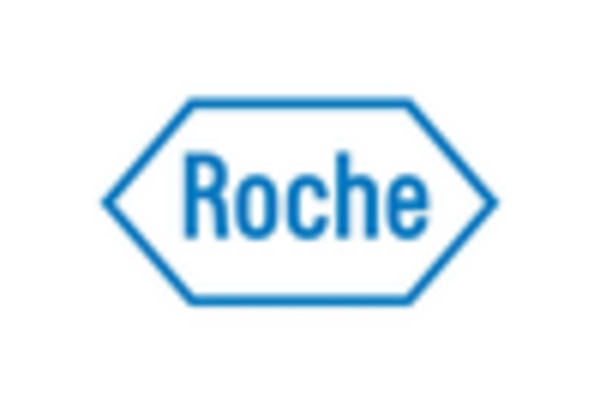Growing Investment in Rare Disease Research
Investment in research focused on rare diseases, including Oculodentodigital Syndrome, is a critical driver for the Oculodentodigital Syndrome Market. Governments and private organizations are increasingly recognizing the need for research funding to address the challenges posed by rare genetic disorders. In recent years, funding for rare disease research has seen a substantial increase, with billions allocated to uncover the underlying mechanisms of these conditions. This influx of capital is likely to accelerate the development of new therapies and treatment modalities for Oculodentodigital Syndrome. As research progresses, the market may witness the introduction of innovative solutions that cater to the specific needs of affected individuals, thereby enhancing the overall landscape of the Oculodentodigital Syndrome Market.
Rising Demand for Genetic Counseling Services
The demand for genetic counseling services is on the rise, significantly impacting the Oculodentodigital Syndrome Market. As awareness of genetic disorders increases, more individuals are seeking professional guidance to understand their risks and options. Genetic counselors play a vital role in educating patients about Oculodentodigital Syndrome, its inheritance patterns, and potential implications for family members. This growing interest in genetic counseling is likely to drive the need for specialized services and resources within the market. Additionally, as more families are affected by the syndrome, the demand for comprehensive support systems is expected to grow, further contributing to the expansion of the Oculodentodigital Syndrome Market.
Technological Advancements in Diagnostic Tools
Technological innovations in diagnostic tools are significantly influencing the Oculodentodigital Syndrome Market. The development of advanced imaging techniques and genetic testing has improved the accuracy of diagnosing this rare syndrome. For instance, next-generation sequencing technologies allow for more precise identification of genetic mutations associated with Oculodentodigital Syndrome. This advancement not only facilitates early diagnosis but also aids in the development of targeted therapies. As healthcare providers increasingly adopt these technologies, the market is likely to experience growth driven by the demand for efficient diagnostic solutions. Moreover, the integration of artificial intelligence in diagnostic processes may further enhance the capabilities of healthcare professionals, leading to better patient outcomes and increased market activity.
Emergence of Support Networks and Advocacy Groups
The emergence of support networks and advocacy groups for individuals with Oculodentodigital Syndrome is fostering a more informed community, thereby influencing the Oculodentodigital Syndrome Market. These organizations provide essential resources, education, and emotional support to patients and their families. By raising awareness and promoting research initiatives, advocacy groups are instrumental in driving funding and attention towards the syndrome. Their efforts not only empower affected individuals but also encourage collaboration among researchers, healthcare providers, and policymakers. As these networks continue to grow, they are likely to enhance the visibility of Oculodentodigital Syndrome, leading to increased demand for treatments and services within the market.
Increasing Prevalence of Oculodentodigital Syndrome
The rising incidence of Oculodentodigital Syndrome is a notable driver in the Oculodentodigital Syndrome Market. Recent studies indicate that the syndrome affects approximately 1 in 250,000 individuals, leading to heightened awareness among healthcare professionals and patients alike. This increasing prevalence necessitates improved diagnostic tools and treatment options, thereby stimulating market growth. As more cases are identified, the demand for specialized healthcare services and genetic counseling is likely to rise. Furthermore, the growing number of patients may lead to increased funding for research and development, which could enhance the understanding of the syndrome and its management. Consequently, the Oculodentodigital Syndrome Market is poised for expansion as stakeholders respond to the needs of this patient population.

















Leave a Comment